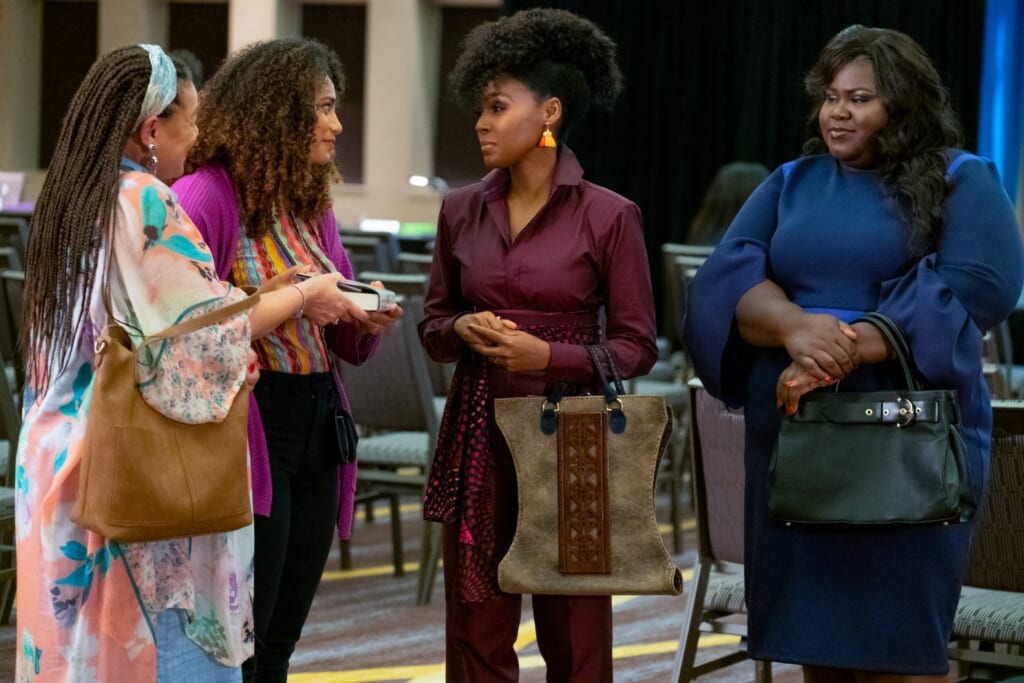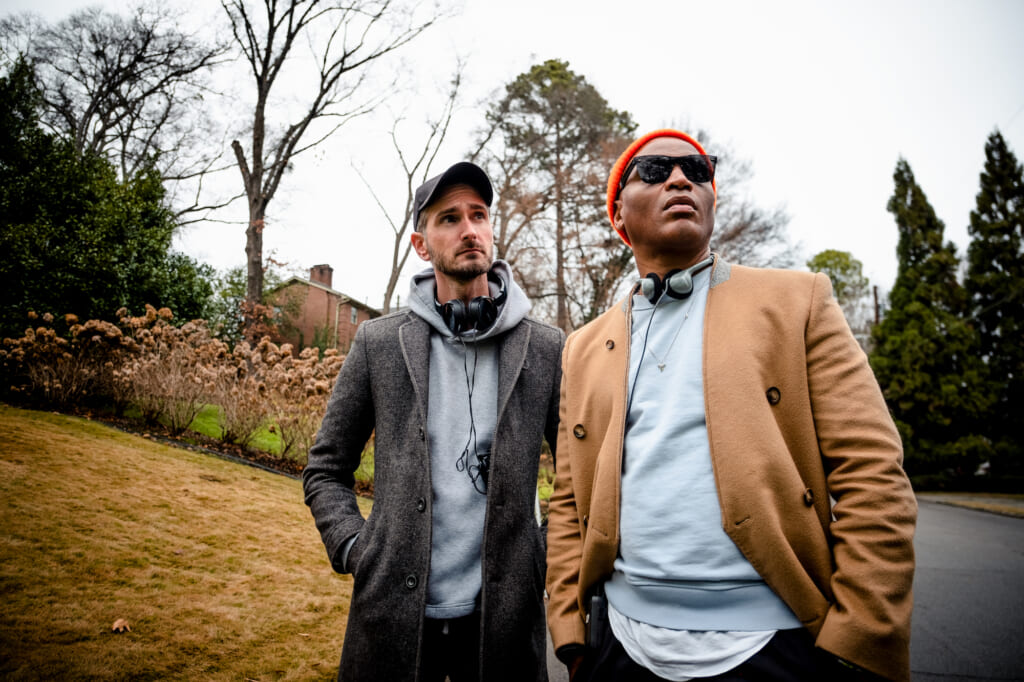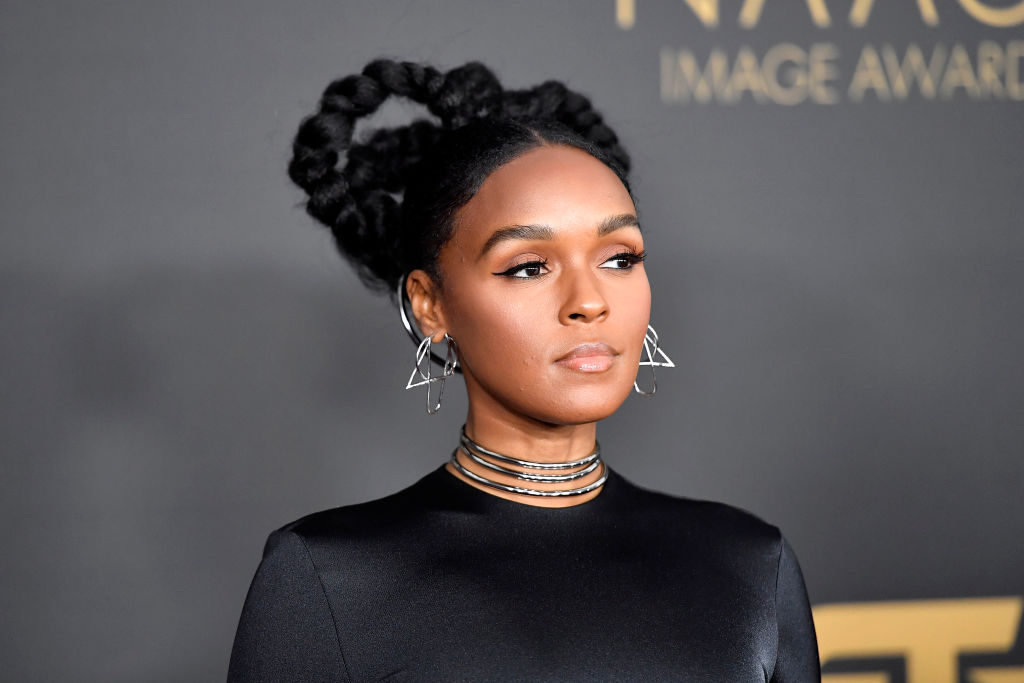‘Antebellum’ co-director Gerard Bush on star Janelle Monáe, Black history and more
Tre Johnson spoke to the co-director behind 'Antebellum', starring Janelle Monae in her first lead role
Just a couple of weeks ago, Donald Trump issued a declaration to the nation to do away with racial sensitivity training that deals with things like white privilege and critical race theory. It wasn’t a surprising move for a president whose motives have been largely rooted in turning back the clock to an America more defined by denial than in dealing with the nation’s culpability in racialized power and injustice.
Read More: Janelle Monáe on ‘Antebellum’ role: ‘The world owes Black women so much’
Like many of you, I’ve sat in these kinds of trainings in workplace spaces over the years while concepts of diversity, cultural sensitivity, political correctness, inclusivity, and unpacking privilege were dispensed to help shed light on what we swim in and bring to our collective public spaces and how they inform and reflect our environments.
Those trainings were sometimes informative, sometimes cathartic, often controversial, and always left me wondering who is the intended audience? Was it the blind, well-intentioned white people sitting alongside me?
Was it the blissfully ignorant, defensive white people sitting a couple of seats over? Was it for the maligned and silenced Black and brown people forced to endure in these environments without any say or visibility?
When we left those rooms, we often left with fractured reflections; some people feeling charged, some people feeling attacked, some people feeling that the sessions were perfunctory, standard lip service, some feeling it was a waste of time, others feeling vindicated.
Films, particularly Black films, have in many ways served as a more accessible public critical race theory curriculum. This has been especially true in the last decade. Black filmmaking and stories have sought to be the instructors on America’s racial conscience as the country has increasingly begun sliding backward into a primordial hole we’ve labored to escape.
This instruction has taken on a variety of rhetorical approaches. There’s been the directness of films like 12 Years a Slave; the allegorical Queen & Slim; the metaphorical Get Out; the lyrical Moonlight; and the fantastical Black Panther; amongst others. Increasingly, the horror genre is stepping in and up as the intersection of the literal feeling many Black Americans have with a storytelling genre that taps into that existential dread.
The aforementioned Get Out, but also Us, and the soon to be released Candyman are all dabbling in it, while TV series like Black Mirror, Lovecraft Country, and Watchmen have used bits of it to explain and translate the Black journey in America. All of these projects have found niche audiences that are still rife with tensions as they literally or figuratively leave the room, and with them comes the question – What justice or validation are Black people feeling and are white people even getting this?

I saw Antebellum at a small, private screening back in March, which now feels like approximately 15 years ago. When I left the screening, those were some of the things on my mind as I watched Janelle Monáe spin between time and settings that would seem to be at odds with each other, but have a tenuous connection all the same. Since March, the world has, of course, become fantastically different, especially in terms of race as the pandemic sped up conversations long needed to be had and the collapses of a number of monuments.
Antebellum arrives several footsteps into a long-standing march, and just as it taps into the explicit new legacies of Get Out, 12 Years a Slave, and other recent films, and resurfaces many allusions to Octavia Butler’s Kindred, it’s also a film finding its pace with a march that’s several paces ahead of when it was made.
In a conversation with Gerard Bush, who co-wrote and co-directed Antebellum with Christopher Renz, who are known as Bush + Renz, all of these things were on my mind as we waded through space, time, race, and horror together. Below is the conversation.

theGrio: Why was Janelle Monáe the right person to lead this film?
Gerard Bush: We were really looking for someone that we couldn’t even envision after we finished writing the character. She would have to be someone that had a mythological quality and also a woman that reminded me a bit of my grandmother, who was very strong and strong-willed and feisty. We would learn Janelle was in possession of a great reservoir of [all those qualities.] It’s a huge undertaking, especially when you’re talking about it being her first leading role and she delivered in spades. I think her performance is extraordinary. It was meant to be for her.
Why did you want to use time as such as important storytelling device inside of this movie?
That’s really interesting for us because it further underscores that time, in many ways, is an illusion. What if we could step out of one space and be in another space? There’s no difference in how Veronica or the other people were feeling at this plantation, it felt exactly the same…she had an experience that took her from the modern world to a world… down South of chattel slavery.
Do you feel like the pandemic and this current period of time is going to change how people might look at this film now?

The country really can’t agree on anything. I think that we are more polarized than ever and that we continue to find ourselves divided up in two increasingly fragmented factions. The pandemic, the quarantine, the racial reckoning, the uncertainty, the inequality, and the financial impact that the pandemic is having on so many people exacerbates some of the frustrations and anger and sadness that we’re already dealing with.
Antebellum is meant to show all of us that these things that we fear so much aren’t buried with the symbol. Whether that be the N-word or the Confederate statue of Robert E. Lee, just because they’re out of sight or it’s become socially unacceptable to use that language publicly, it doesn’t in any way reflect a change or a decrease in the potency of white supremacy and how it impacts Black people in America and our country as a whole. So what we’d like for people to see is just because something is out of sight, just because you fly over a part of the country, it doesn’t mean that 30,000 feet underneath you is not incredible suffering as a result of the original sin of this country and how it continues to plague us in every corner and crevice. And just because you can’t see it and it’s hidden from view or the words aren’t spoken publicly, doesn’t mean that isn’t happening. It’s just hibernating and evolving.
Do you feel like there you were able to get all of that across in the film?
We’re not here to provide the answers. We are here to make people ask questions and look at it differently, perhaps, than they did before. Even at the end of the movie, it’s not this box with a red bow on it that ties everything up. It’s a nightmare ended. It gives you this feeling. I think it replicates the feeling of waking up from a nightmare and that’s what we’re trying to achieve; that you woke up from a nightmare and you think to yourself, ‘Oh my God, I’m so glad it’s not my life.’
Can you talk about why you held out on the tension of the big reveal as long as you did in the film?
Because you needed to sit in that discomfort and you needed to be indoctrinated into the idea of what this is. Your mind is convinced of what it is, and then suddenly when it’s not, it is sort of a cycle of psychological gymnastics. You go back to the beginning of the movie and the way that you perceive the beginning of the movie has bloomed and evolved into something else based on this new information. You’re then going back and it makes what you saw that much more disorienting, horrific, and disturbing.
How do you think white and Black audiences will receive this film?
There will be a great swath of folks in the Black community that will stand up and cheer. As far as white people are concerned, we were trying to make a movie that will also reach down because the younger members of white America are not getting the truth. There was a study just released that says the majority of American students don’t even know that six million Jews were murdered in the Holocaust.
I hear from Black people all the time who say they’re so tired of the slave narrative and [that they] wouldn’t last one minute on a plantation. I think that we need to get really clear on our past. I think that we need to because we need to reexamine it thoroughly as we move into this process of dismantling and rebuild the scaffolding that continues to support growth and equity as it relates to Black America.
How would you help people frame how to look at the acts of violence, the early slave scenes, and some of the character choices and behavior early on in the film?
I think that some people obviously do not know their history and they should probably go and do that work before responding with such a reckless and inaccurate description of what that is. [Christopher and I] did a lot of research on what that period looked like and when I tell you that we don’t even begin to scratch the surface of the cruelty inflicted on these people; not even close.
If we decided to do that, we would have told the story where this white woman slave owner would starve her 14-year-old house slave and then tempt her with apples and candy and leave it in a very specific area and see if she would try to take it and eat it. Eventually, the little girl couldn’t take it anymore and took a little piece of candy and ate it. Her punishment was to lay her head underneath the woman’s rocking chair so she could rock back and forth over her face, breaking her jaw and disfiguring her. And this was just one of the myriad atrocities that Black enslaved people faced on the plantation, so to call it ‘cartoonish’ is to be really naive and not well-informed. That is the kind of cruelty that was the metastasizing psychopathy of the antebellum South. That’s what that looked like, and so we wanted to be accurate in our reflection of that.
Because you had a multiracial cast on the set, what was it like to navigate with everybody involved? How did you decide the line between what was too far or far enough?
Read More: Janelle Monáe says filming ‘Antebellum’ on plantation was ‘triggering’
We knew that every single person involved in the movie is involved in the movie for the right reasons. And they were all making tremendous sacrifices to do this. There wasn’t anyone that was deriving some sadistic satisfaction from being, you know, disgustingly cruel to Black people. No one enjoyed any of this. This is hard work…We have moved into this place where our moviegoing audience in America has become so hypersensitive to anything that disturbs them and anything that makes them uncomfortable. They’ve become so accustomed to theme park rides that distract them from the reality of the world that we live in. I hope that this movie wakes them up out of the idea that a superhero with a cape from another planet is going to come to save us. It is only us who can save us from us.
Have you subscribed to theGrio’s podcast “Dear Culture”? Download our newest episodes now!
